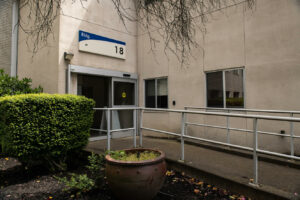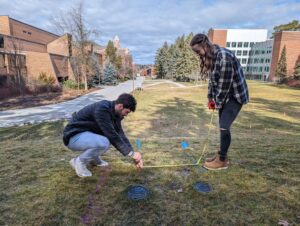In 1988, while working in Ohio, a molecular biology researcher’s work got destroyed. Pat Hunt was working in a lab testing estrogen levels on mice. While cleaning the plastic mouse cages, a temporary worker grabbed the wrong detergent.
This detergent, which was harsher, allowed a chemical from the plastic to leach out. The chemical had a similar effect to the estrogen Hunt was testing. This affected Hunt’s control group and resulted in the lab being set back by a year.
While it did slow her down, Hunt didn’t stop. She was determined to find out what had happened.
That was over 20 years ago. Now Pat Hunt is a distinguished researcher and professor at Washington State University. She is best known for her discovery that the common chemical Bisphenol A (BPA) is a strong endocrine disruptor. That accident, made by a temporary worker, changed the course of Hunt’s entire career.
Early Research
Hunt was not looking for this discovery. Her original focus was women’s reproductive systems. She first worked in biology as an undergraduate at Michigan State University. “When I started learning about chromosomes and looking at chromosomes down the microscope, it was like, ‘Oh man, this is what I want to do,’” Hunt said.
Hunt started working at WSU in 2005. Earlier in her career she worked at universities in both Georgia and Ohio. She had always been in a medical school setting, until coming to WSU.
In 1988, her research changed from female reproductive systems, to studying chemicals and their effects on hormones. The mistake made by a temporary worker was not something every scientist would have caught. Terry Hassold, Hunt’s husband and research partner, said that he was just upset by the disruption in the lab.
“I was just annoyed by this,” Hassold said. “I just wanted to ignore it.”
Hunt didn’t ignore it. She decided to figure out what had happened to their experiment.
“She’s a little like a bulldog,” Hassold said. “When she gets a hold of a problem, she really wants to solve it.”
Following this mistake, Hunt’s lab shifted to look at the effects of BPA on eggs. When Hunt and her colleagues published their findings around BPA’s harmful effects, they faced a new side of science: pushback from multi-million dollar companies.
“We get harassed every time we write a paper,” Hunt said. “We’re fighting back as David taking little slingshots against Goliath.”
Despite having to fight to prove her research, Hunt continues to research BPA and its effects. “She’s really afraid of no one,” Crystal Lawson, her lab assistant, said. “These are big companies that disagree with her science, and she doesn’t back down because she knows what her data says.”
Communicating Science
All of this work to tell the public about her research really showed Hunt how important communicating science is. Both Hunt and her husband went through media training, learning techniques to communicate their work. Hunt was the star of the pair.
“We both had media training. You know Pat’s took, so she’s much better at dealing with the media than I am,” Hassold said.
Hunt not only learned how to explain her work to journalists, but also built skills for speaking in congress. Hunt testified about her findings before several state legislatures, Hassold said.
“The BPA story was so big because she was so good at telling it, and making people understand her science,” Lawson said.
Seeing a need for teaching science communication, Hunt has focused her classroom on that skill. Hunt currently teaches a class for seniors. Originally, the section focused on writing, but after arguing with the previous teacher, Hunt changed the curriculum to focus it on communication.
The classroom, fully outfitted with new chairs, desks, and a monitor system, is barely filled up by her small class. The room has several big windows that bring in natural light. Hunt sits at a white desk near the front of the room, short enough to blend in as a student.
As people file in, they walk over to her, asking questions and talking with her. Despite there being only 14 students, the room is filled with laughter during discussions. Students relax in their seats and ask specific questions about their topics.
Retirement
As Hunt prepares to retire in the upcoming years, the senior capstone class is the only section she currently teaches. Teaching in the classroom isn’t the main way to prepare students, she said.
“Training people to take my job is what I’m trying to do,” Hunt said.
Hunt has also cut down on the amount of research labs, doing two instead of three. There are still several questions Hunt wants to find answers to though.
One of the labs she is currently working on is analyzing data she and her team have spent the past several years gathering. This and other projects, things that have taken years to set up, are what Hunt hopes to finish.
“She cares an awful lot about an awful lot of things that impact other people,” Lawson said. “I think that’s kind of amazing.”
Hunt’s retirement will be noticed by many who do research around molecular biology.
“She’s sort of a grande dame of the field,” Hassold said.
When talking about her retirement, both what she accomplished and also the things she may never get to, Hunt’s voice caught.
“I think that’s one of the things that makes this kind of research career so fun. We control our own destiny,” Hunt said. “I feel really privileged to have had a career that I just have had a blast doing.”















